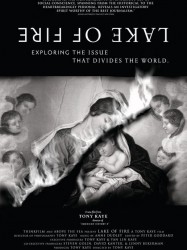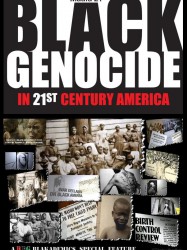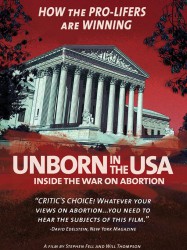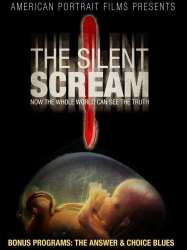Live Free or Die est un film de genre Documentaire
Live Free or Die (1999)

Si vous aimez ce film, faites-le savoir !
Live Free or Die is a 2000 documentary film that follows Dr. Wayne Goldner, a New Hampshire OBGYN fighting on the latest front of the "abortion wars." The feature originally aired as part of PBS' P.O.V. series. It was directed and produced by Marion Lipschutz and Rose Rosenblatt of Incite Pictures.
Commentaires
Postez un commentaire :
Suggestions de films similaires à Live Free or Die
Il y a 8975 ayant les mêmes genres cinématographiques, 9915 films qui ont les mêmes thèmes (dont 14 films qui ont les mêmes 4 thèmes que Live Free or Die), pour avoir au final 70 suggestions de films similaires.Si vous avez aimé Live Free or Die, vous aimerez sûrement les films similaires suivants :

Lake of Fire (2006)
, 2h32Réalisé par Tony Kaye
Origine Etats-Unis
Genres Documentaire
Thèmes La grossesse, Sexualité, Documentaire sur une personnalité, Documentaire sur la santé
Note81%





 , 57minutes
, 57minutesRéalisé par Dorothy Fadiman
Origine Etats-Unis
Genres Documentaire
Thèmes La grossesse, Sexualité, Documentaire sur une personnalité, Documentaire sur la santé
Acteurs Dorothy Fadiman
Note72%






Eclipse of Reason (1987)
, 27minutesOrigine Etats-Unis
Genres Documentaire
Thèmes La grossesse, Sexualité, Documentaire sur une personnalité, Documentaire sur la santé
Acteurs Charlton Heston

Genres Documentaire
Thèmes La grossesse, Le racisme, Sexualité, Documentaire sur la discrimination, Documentaire sur le droit, Documentaire sur une personnalité, Documentaire sur la santé
Note76%





The title comes from the Swahili term "maafa," which means tragedy or disaster and is used to describe the centuries of global oppression of African people during slavery, apartheid and colonial rule, while the number "21" refers to an alleged maafa in the 21st century (though beginning in the 19th), which the film says is the disproportionately high rate of abortion among African Americans. The film states that abortion has reduced the black population in the United States by 25 percent. It discusses some of Planned Parenthood's origins (formerly the American Birth Control League), attributing to it a "150-year-old goal of exterminating the black population.
[...]Voir plus...
 , 1h45
, 1h45Origine Etats-Unis
Genres Documentaire
Thèmes La grossesse, Sexualité, Documentaire sur une personnalité, Documentaire sur la politique, Documentaire sur la santé, Politique
Note63%





Il relate les événements majeurs tels que la marche annuelle pour la vie de Washington et la marche pour la vie des femmes.

Spin (1995)
, 56minutesGenres Documentaire
Thèmes La grossesse, Sexualité, Documentaire historique, Documentaire sur une personnalité, Documentaire sur la politique, Documentaire sur la santé, Politique
Acteurs Jon Voight, Larry King
Note78%





 , 28minutes
, 28minutesRéalisé par Dorothy Fadiman
Origine Etats-Unis
Genres Documentaire
Thèmes La grossesse, Sexualité, Documentaire historique, Documentaire sur une personnalité, Documentaire sur la santé
Note67%






After Tiller (2013)
, 1h27Origine Etats-Unis
Genres Drame, Documentaire
Thèmes La grossesse, Sexualité, Documentaire sur une personnalité, Documentaire sur la santé
Note73%





The film follows the daily work and lives of doctors LeRoy Carhart, Warren Hern, Shelley Sella, and Susan Robinson, the only four doctors in the United States who openly perform late-term abortions after the 2009 assassination of Dr. George Tiller.

12th & Delaware (2010)
, 1h20Réalisé par Heidi Ewing, Rachel Grady
Origine Etats-Unis
Genres Documentaire
Thèmes La grossesse, Sexualité, Documentaire sur une personnalité, Documentaire sur la santé
Note72%






Le Cri silencieux (1984)
, 28minutesOrigine Etats-Unis
Genres Documentaire
Thèmes La grossesse, Sexualité, Documentaire sur une personnalité, Documentaire sur la santé
Note51%





Dans ce film, Bernard Nathanson, ancien avorteur repenti, sert à la fois d'expert médical et de narrateur. Il décrit les événements de l'avortement « du point de vue de la victime ». Le film compile une série d'images floues de nature échographique. Nathanson montre au grand public les instruments utilisés pour un avortement typique et prétend que la tête, même à la gestation de 12 semaines, sera trop grande pour entrer dans le dispositif d'aspiration ; il montre alors comment les forceps sont utilisés pour écraser le crâne, où les ondes cérébrales, d'après lui, ont été actives pendant six semaines.
 Connexion
Connexion